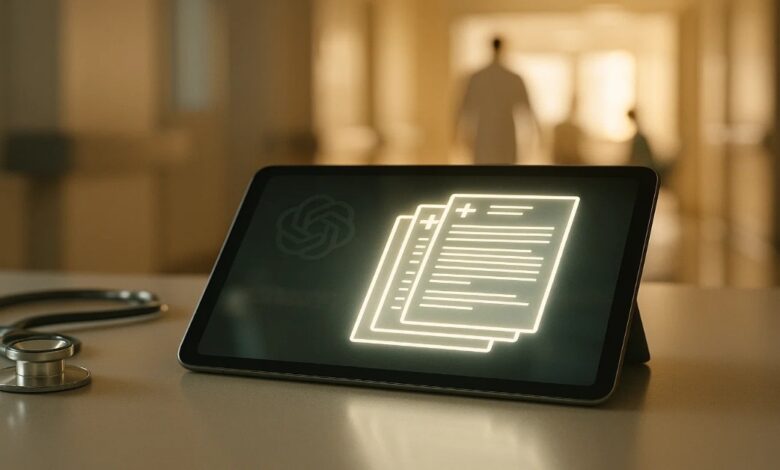ChatGPT Streamlined Medical Summaries – Doctors Had More Time for Patients

How ChatGPT Gave Doctors Back Their Most Precious Resource
Dr. Maya Patel, a young physician in Chicago, was exhausted. Her days weren’t being swallowed by patients but by paperwork. Between electronic medical records, insurance forms, and endless follow-up notes, she spent more time behind a screen than talking to people.
That was when she tested ChatGPT. Instead of typing line after line of repetitive information, she asked it to generate concise medical summaries based on her clinical notes. For the first time in years, she left the clinic on time — and with enough energy to see her patients as people, not files.
Why Doctors Struggled Before ChatGPT
Healthcare has been drowning in documentation. Every appointment leaves behind layers of digital records — test results, prescriptions, diagnoses, progress updates. Hospitals tried to solve it with new software, but most of it only added clicks and extra tabs.
Doctors like Patel often stayed late, catching up on summaries long after patients went home. Burnout wasn’t just from stress. It was from spending evenings writing what an intelligent system could easily structure.
Woman has lingering sore throat.
Doctor tells her to wait it out, ChatGPT suggests an ultrasound, which reveals…aggressive thyroid cancer.
I tell all my friends and family – please get a second opinion on medical stuff from AI. It might save your life! pic.twitter.com/AgPEFsG7eV
— Justine Moore (@venturetwins) June 25, 2025
The Prompt That Changed Her Workflow
Patel’s first experiment was simple. She uploaded her handwritten notes and typed into ChatGPT:
“Summarize this clinical encounter in professional medical language, under 150 words, including symptoms, diagnosis, and prescribed treatment.”
The result was clear, formatted, and accurate. More importantly, it saved her 15 minutes per patient. In a day of 20 patients, that was five hours freed.
How AI Medical Summaries Look in Practice
Here’s what ChatGPT generated from rough notes:
Before (doctor’s shorthand):
“Pt reports chest pain, onset last night, worse after meals. No SOB. ECG normal. Fam history: GERD. Trial antacids, diet adjust. Follow-up in 2 wks.”
After (AI summary):
“The patient presented with episodic chest pain, onset the previous evening, exacerbated postprandially. No shortness of breath reported. ECG within normal limits. Family history significant for gastroesophageal reflux disease. Plan: initiate trial of antacids, recommend dietary adjustments, and schedule follow-up in two weeks.”
Clean. Professional. Ready for the record.
The Ripple Effect in Patient Care
With summaries automated, Patel noticed something unexpected: her patients started smiling more. She wasn’t rushing. She was asking questions she used to skip. Instead of worrying about typing every word, she was listening.
One patient even told her: “It feels like you’re actually here with me again, not with the computer.” That line stuck. It reminded Patel why she chose medicine in the first place.
Chatronix – The Hidden Edge in Medical Productivity
When Patel discovered Chatronix’s advanced workspace, her workflow accelerated even more. Unlike relying on a single model, she could compare outputs from six leading systems at once.
What made the difference:
- 6 models in one chat gave her medical summaries from multiple perspectives.
- Turbo mode cut waiting time to seconds.
- One Perfect Answer blended the best phrasing from all outputs, reducing the risk of missing key details.
- 10 free requests meant she could test the system before scaling it across her practice.
For doctors already juggling time and liability, this was more than convenience. It was peace of mind.
Real Prompts That Doctors Can Steal
Here are three prompts Patel now shares with colleagues:
- “Summarize patient progress notes in plain English for patient-friendly discharge instructions, under 200 words.”
- “Convert medical shorthand into a structured SOAP note (Subjective, Objective, Assessment, Plan).”
- “Condense multiple lab results into a one-paragraph clinical summary highlighting only abnormal findings.”
These aren’t futuristic. They’re practical, and they save hours every week.
The Table That Proved the ROI
| Task | Time Without AI | Time With ChatGPT | Hours Saved Weekly |
| Progress notes | 5 hrs | 1.5 hrs | 3.5 hrs |
| Patient summaries | 4 hrs | 1 hr | 3 hrs |
| Insurance documentation | 2 hrs | 0.5 hrs | 1.5 hrs |
| Total | 11 hrs | 3 hrs | 8 hrs |
Eight hours a week — an entire workday — returned to patient care.
Bonus Prompt for Clinicians
“Act as a clinical assistant. Summarize today’s patient cases into one-page bullet points with diagnoses, treatments, and next steps for a weekly medical team meeting.”
This wasn’t just about records. It made handoffs between doctors smoother and team discussions sharper.
Why This Matters Beyond Patel’s Story
Patel’s journey is one example. Across the US, physicians are testing AI to fix the most broken part of healthcare: the paperwork. Doctors aren’t looking for hype. They’re looking for hours back, for focus, for sanity.
When ChatGPT — and platforms like Chatronix — handle the admin, humans finally get to do the human part: empathy, explanation, care.

